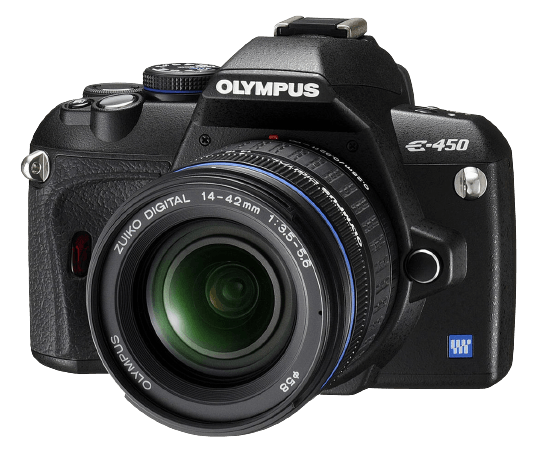Olympus E450 Specs and Scores

The Olympus E450 receives a score of 37/100 in our evaluation. This DSLR camera, announced on 03/31/2009, is a 2009 model with a launch price of $443. It measures 130 x 91 x 53mm and weighs 426g (0.94lbs). Though it has been more than a decade since its release, the E450’s specifications still hold some relevance in today’s market.
However, with the rapid advancements in camera technology, the Olympus E450 may struggle to compete with newer models in terms of features and performance.
Olympus E450 Overview and Optics
The Olympus E450 receives a score of 36/100 for its optics. This camera features 10 megapixels, a shooting speed of 3.5 frames per second, and an NMOS sensor type. The TruePic III processor powers the E450, and the DXOMARK score for the sensor stands at 56. With a Micro Four Thirds sensor size and Micro 4/3 lens mount, the Olympus E450 offers decent compatibility with various lenses.
However, the E450 lacks image stabilization, which can impact image quality in certain situations. The aspect ratio is 4:3, providing a standard format for images. Comparing these specifications to current market offerings, the Olympus E450 falls short in terms of resolution, shooting speed, and overall performance.
The Olympus E450, with its optics score of 36/100, does not measure up to the standards of today’s market. The absence of image stabilization and lower resolution make it less desirable for users seeking high-quality images and versatility.
Olympus E450 Video Performance
The Olympus E450 lacks video capabilities. This camera focuses solely on photography, without offering any video recording features. Users searching for video functionality should consider other camera options.
Olympus E450 Features and Benefits
The Olympus E450 holds a feature score of 34 out of 100. It possesses a 2.7-inch screen with a resolution of 230,000 dots. However, the camera lacks modern features such as a touchscreen, flip screen, GPS, WiFi, and Bluetooth.
While the E450 may have been competitive during its release, the absence of these advanced features leaves it trailing behind in the fast-paced camera market. With a limited screen size and resolution, users may find it challenging to navigate the camera’s settings and review images, especially in comparison to contemporary models.
Considering these specifications, the Olympus E450 falls short in today’s market, as it does not provide the level of convenience and connectivity that many photographers expect from a digital camera.
Olympus E450 Storage and Battery
The Olympus E450 storage and battery section receives a score of 60/100. This camera offers two memory card slots, accepting both Compact Flash (Type I or II) and xD Picture Cards. While these memory card types may not be as popular in today’s market, they still provide adequate storage options for users.
Regarding battery performance, the E450 relies on a BLS-2 battery type, providing up to 500 shots per charge. This battery life is satisfactory for casual photographers but may fall short for professionals or heavy users. Additionally, the camera does not support USB charging, which could be inconvenient for some users.
Despite its modest score, the Olympus E450’s storage and battery capabilities are sufficient for everyday use. However, compared to more advanced cameras in the market, it may not meet the needs of professional photographers or those seeking advanced features.
